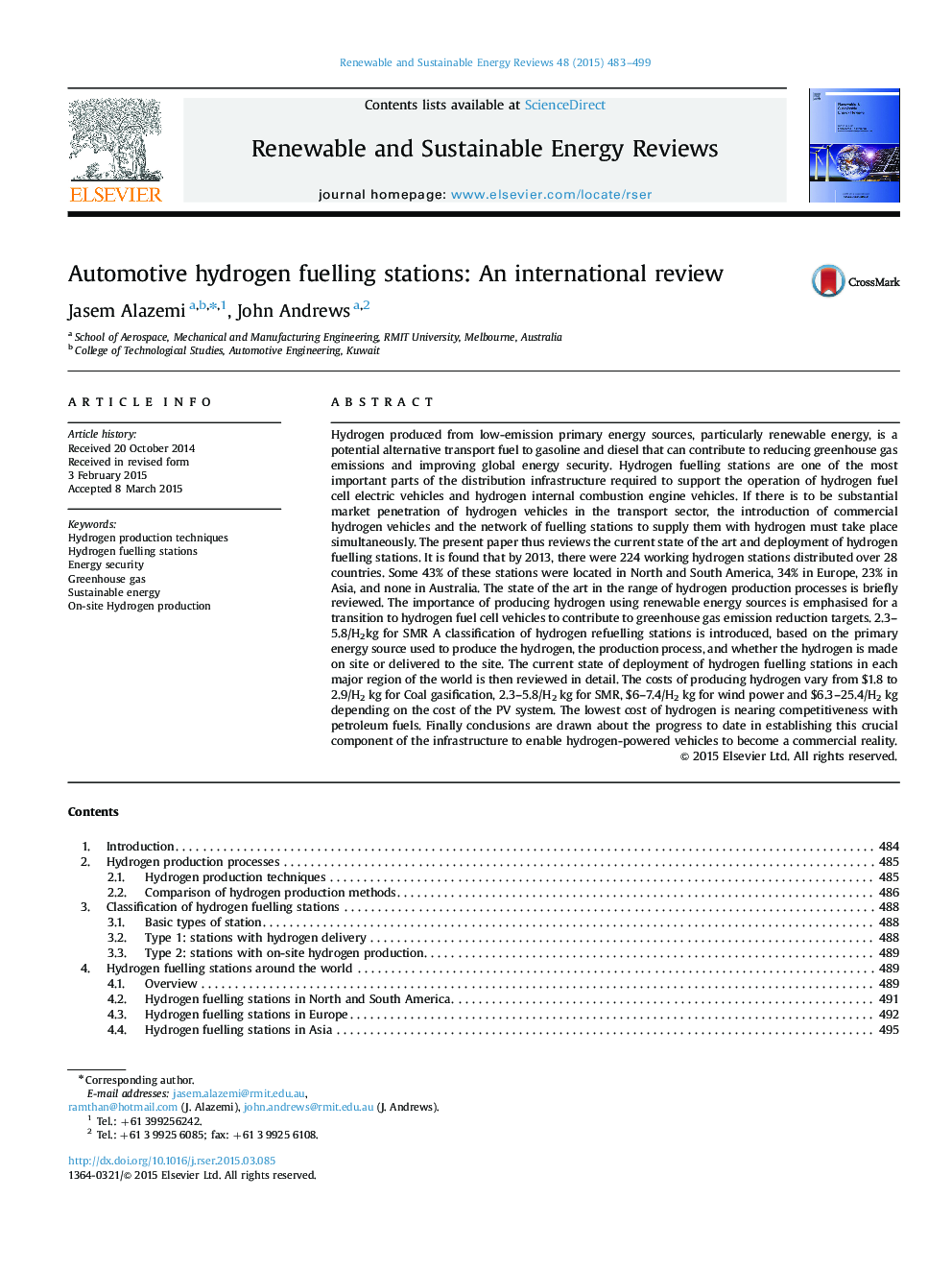| Article ID | Journal | Published Year | Pages | File Type |
|---|---|---|---|---|
| 8116481 | Renewable and Sustainable Energy Reviews | 2015 | 17 Pages |
Abstract
Hydrogen produced from low-emission primary energy sources, particularly renewable energy, is a potential alternative transport fuel to gasoline and diesel that can contribute to reducing greenhouse gas emissions and improving global energy security. Hydrogen fuelling stations are one of the most important parts of the distribution infrastructure required to support the operation of hydrogen fuel cell electric vehicles and hydrogen internal combustion engine vehicles. If there is to be substantial market penetration of hydrogen vehicles in the transport sector, the introduction of commercial hydrogen vehicles and the network of fuelling stations to supply them with hydrogen must take place simultaneously. The present paper thus reviews the current state of the art and deployment of hydrogen fuelling stations. It is found that by 2013, there were 224 working hydrogen stations distributed over 28 countries. Some 43% of these stations were located in North and South America, 34% in Europe, 23% in Asia, and none in Australia. The state of the art in the range of hydrogen production processes is briefly reviewed. The importance of producing hydrogen using renewable energy sources is emphasised for a transition to hydrogen fuel cell vehicles to contribute to greenhouse gas emission reduction targets. 2.3-5.8/H2kg for SMR A classification of hydrogen refuelling stations is introduced, based on the primary energy source used to produce the hydrogen, the production process, and whether the hydrogen is made on site or delivered to the site. The current state of deployment of hydrogen fuelling stations in each major region of the world is then reviewed in detail. The costs of producing hydrogen vary from $1.8 to 2.9/H2Â kg for Coal gasification, 2.3-5.8/H2Â kg for SMR, $6-7.4/H2Â kg for wind power and $6.3-25.4/H2Â kg depending on the cost of the PV system. The lowest cost of hydrogen is nearing competitiveness with petroleum fuels. Finally conclusions are drawn about the progress to date in establishing this crucial component of the infrastructure to enable hydrogen-powered vehicles to become a commercial reality.
Related Topics
Physical Sciences and Engineering
Energy
Renewable Energy, Sustainability and the Environment
Authors
Jasem Alazemi, John Andrews,
